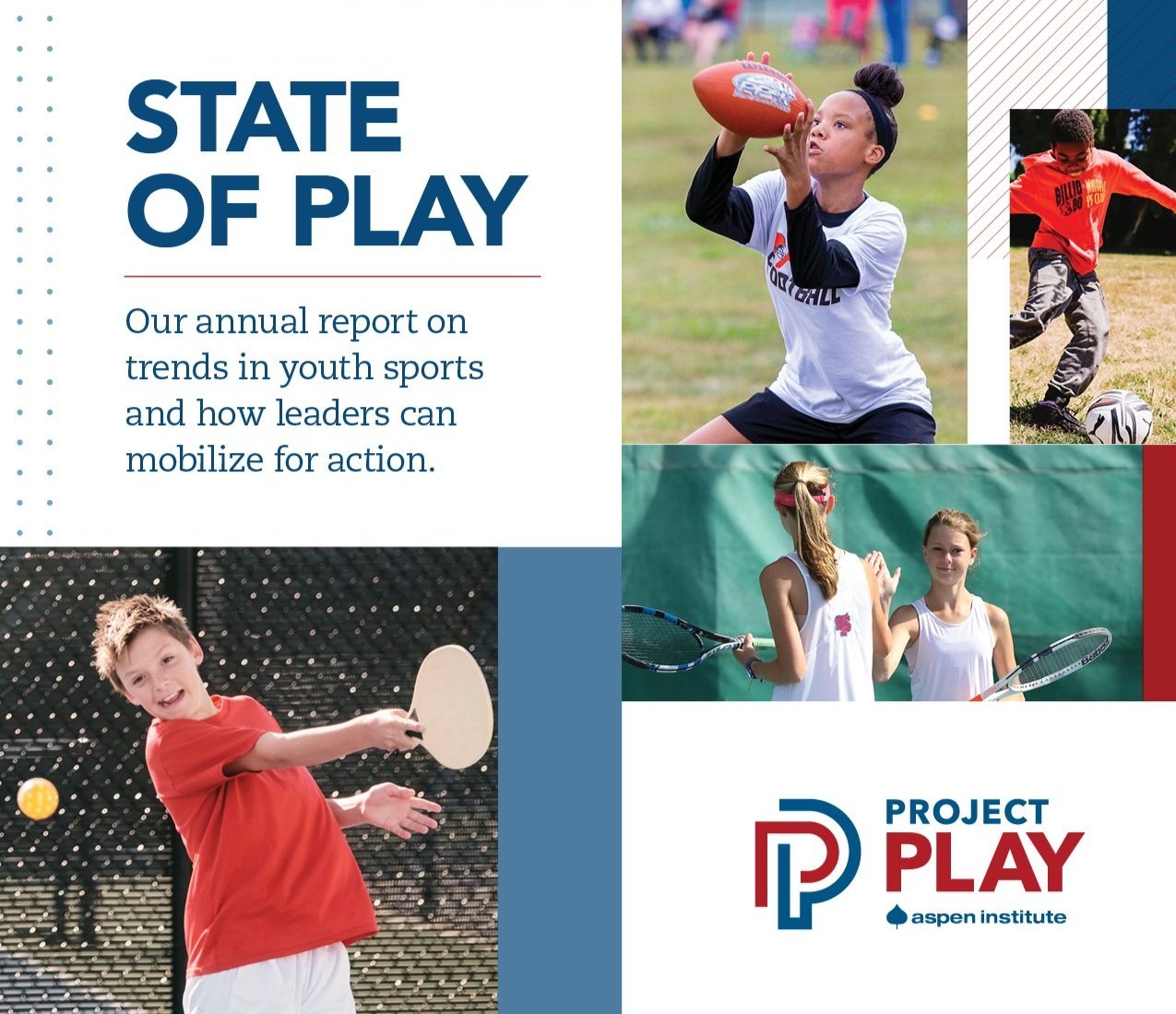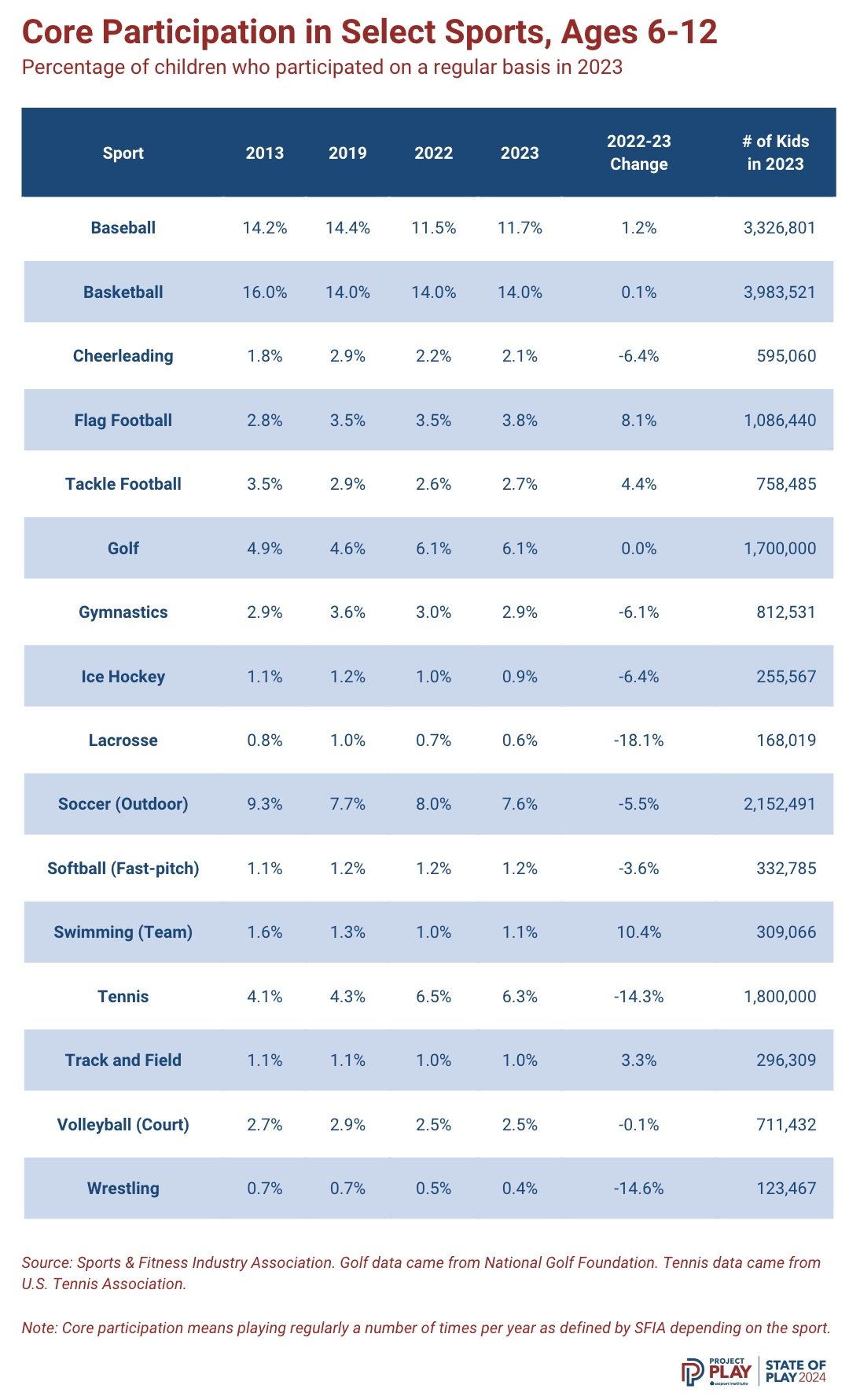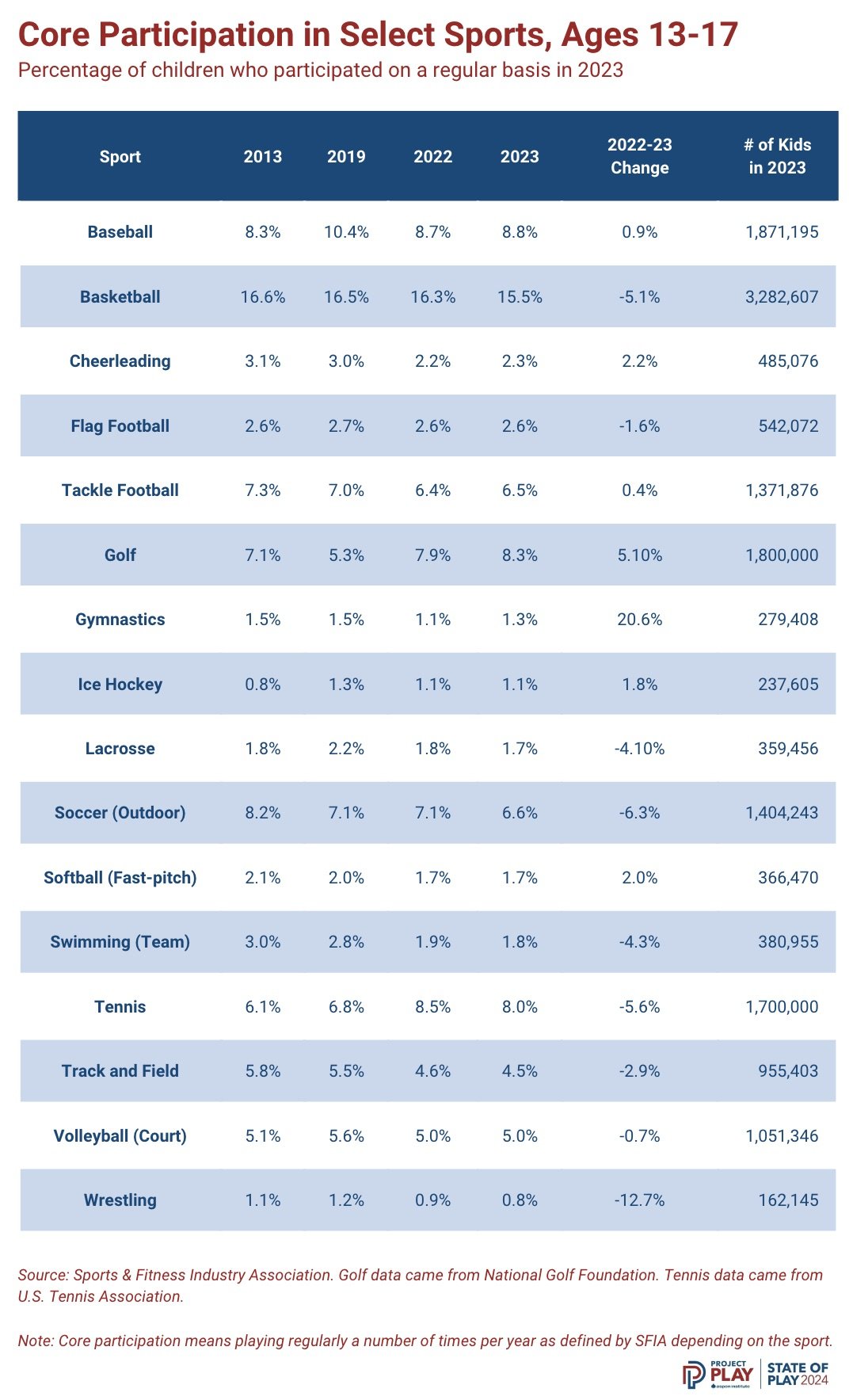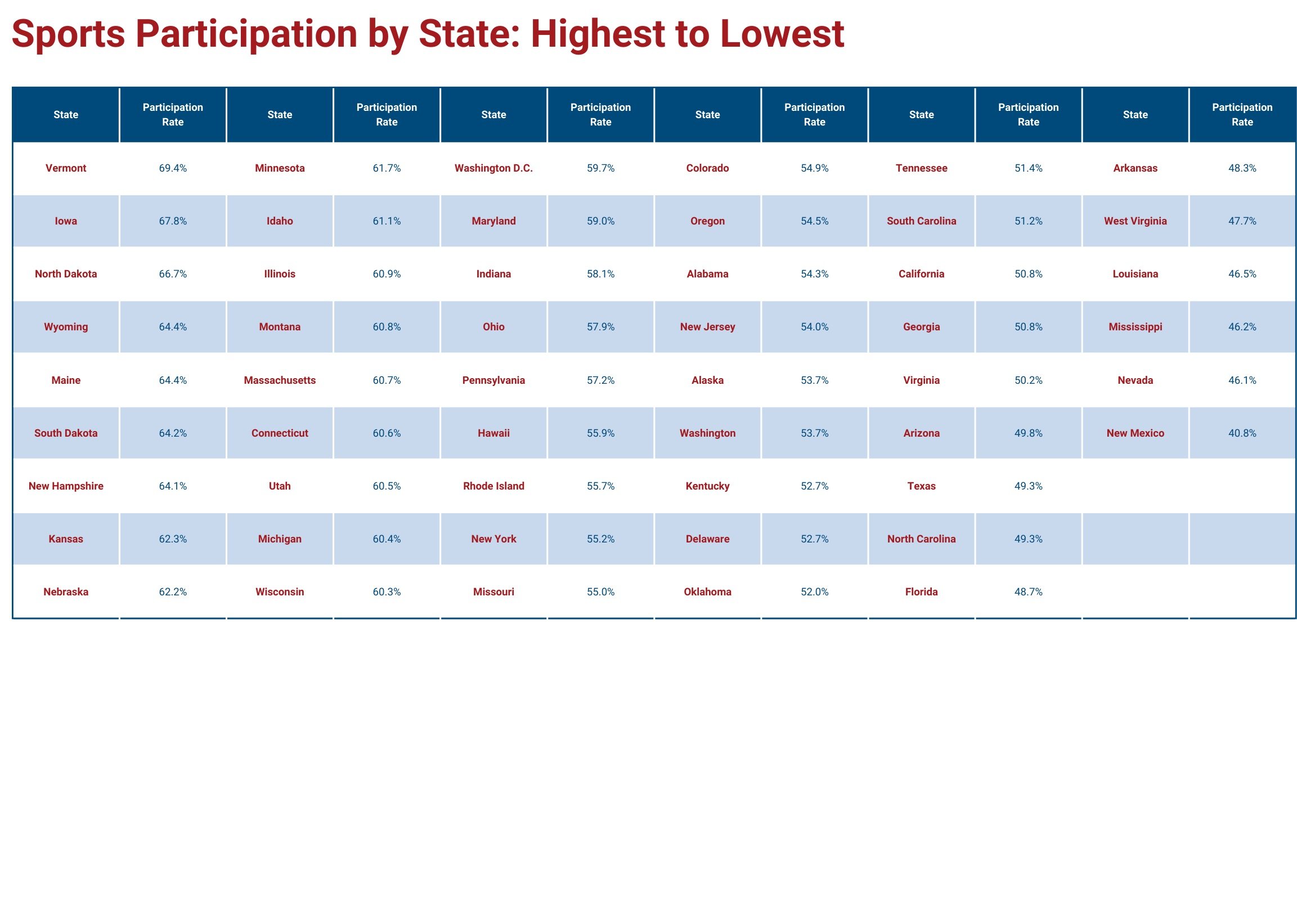At the launch of Project Play in 2013, the United States government produced limited data on sport participation and physical activity rates among youth. That’s changed, with the help of advocates in our network. Today, the National Survey of Children’s Health offers robust annual data that can be sorted in more than two dozen ways, including age, race/ethnicity, gender, household income, family structure, state or region, and even current insurance status.
The most recent year in which data is available is 2022. In that year, 54% of youth ages 6-17 “participated on a sports team” or “took sports lessons afterschool or on weekends.” So, that basically means organized sports. (In 2019, the U.S. Department of Health and Human Services set a long-term objective: 63.3% of students playing by 2030).
For historic and sport-specific trends, a key source of data on participation rates is produced by the Sports & Fitness Industry Association, a Project Play partner that provides custom data to the Aspen Institute. Below are charts from Project Play’s State of Play 2024 report, published in October 2024. The report includes includes data and trends related to participation, coaching, and 10 youth sports trends to watch. For the Institute’s analysis of each of these charts, please read the full report.











